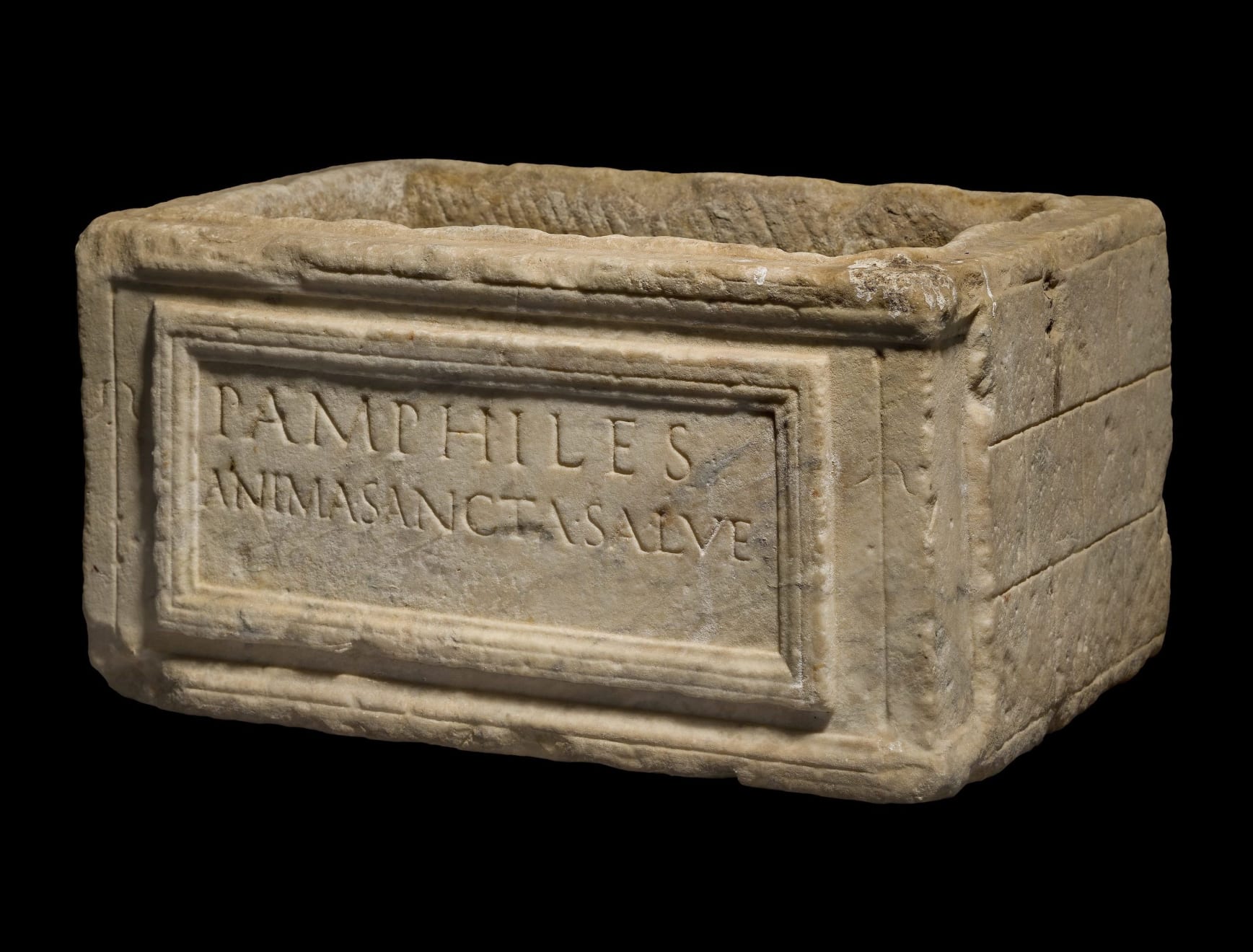Roman
Further images
Provenance
The artist Girolamo Odam (1681 – 1741), Rome
The sculptor Carlo Antonio Napolioni (1675 – 1742), Rome, official restorer to the Museo Capitolino
Sotheby's, London, 17 – 18 July 1985, lot 588
Martha Hyder Collection
Literature
The reference to ‘holy soul’ is unusual in this pagan context. Such concepts as 'soul', 'sanctity' and 'innocence' on epitaphs do appear in pagan contexts but become particularly prevalent in the later Roman, early Christian period.
Paleographically the letters of the inscription allow us to date the urn to the 1st century AD. For example the letter ‘P’ that appears twice has a relatively open curve, the curve in such letters did not close completely until circa 100 AD.
Publications
RECORDED
Antonio Francisco Gori, Codex Marucellianus A, 245 (letter dated 15 June 1740, probably from J. Odam)
PUBLISHED
Scipione Maffei, Museo Veronense, Verona, 1749, p. 281, no. 2.
Corpus Inscriptionum Latinarum, Vol. VI: Inscriptiones Urbis Romae latinae, part 3, Berlin, 1886, no. 23740.







